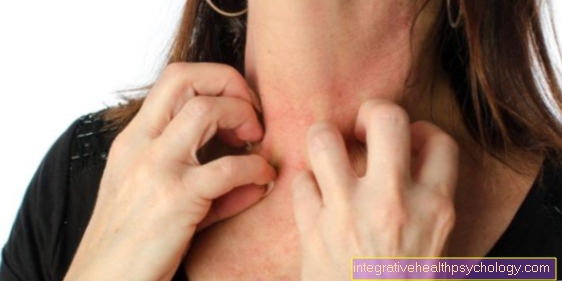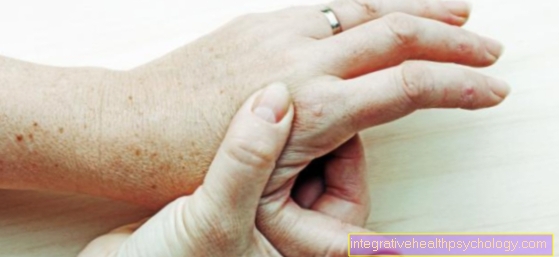The skin color
introduction
The color of the skin is very different from person to person. In humans, the color of the skin depends primarily on how much of the pigment melanin is present in the skin.
The skin pigment melanin

Melanin is a dye (also called pigment) that is made by cells in the skin called melanocytes. There are two different forms of melanin:
- on the one hand eumelanin, which is mainly responsible for the skin color and is more brown to black,
- and on the other hand the pheomelanin, which is more reddish to yellowish and is mainly found on lighter skin types.
The job of melanin is to protect the body from harmful ultraviolet radiation. This explains why people who live in regions with high solar radiation such as Africa or South America, in principle, have a darker skin color than people who live in areas where the sun shines less often.
The melanin content in the skin is actually genetically determined, which means that everyone gets their skin color practically inherited from their mother and father. However, this can be influenced to a certain extent:
- With increased exposure to the sun, the body can produce a larger amount of melanin up to a certain point and thus adapt to a changed environment.
However, a fundamentally fair-skinned person will never be able to turn completely black, because he is not predisposed to it. In a complete absence of melanin, the skin appears almost white and the eyes reddish (which shows that the amount of melanin also has an influence on our eye color), this disease is known as albinism.
More about this topic can be found: Melanin
The different skin types
Depending on the skin color, there are 6 skin types in dermatology, which were described by the American family doctor Fitzpatrick and which are associated with different characteristics regarding the appearance and behavior of the skin when exposed to the sun:
- Type 1 = the Celtic type: These people have very light skin, mostly blonde or reddish hair, light eyes and often freckles. Under the influence of the sun's rays, this type reacts either with the formation of new freckles or very quickly with the development of sunburn; people of this type rarely get really tan.
- Type 2 = the Nordic type: This type is characterized by light skin, light eyes and relatively light hair; freckles are even more common here. In contrast to type 1, however, these people turn tan, albeit slowly.
- Type 3 = the mixed type: With this type, all skin and eye colors can be present, but the most common for both features is a shade of brown. Freckles are rarely found here, tanning occurs faster and sunburn is no longer as likely
- Type 4 = the Mediterranean type: People with this skin type have a darker or olive-colored complexion, no freckles, dark eyes and dark (that is, brown or black) hair, even when they are "untanned". Sunburn rarely occurs under increased solar radiation, but tan quickly
- Type 5 = the dark skin type: Very dark skin, black eyes and black hair are typical here, the risk of sunburn is extremely low and further tanning to a very dark brown takes place very quickly.
- Type 6 = the black skin type: This skin type is especially widespread among the indigenous people of Australia and the sub-Sahara. Both eyes and hair are black and even the skin can be described as black rather than brown. Sunburn is practically non-existent with this guy.
Please also read: What is your skin type?
Skin color and sunburn
Depending on which skin type you belong to, you should behave differently when exposed to the sun. The lower types are at high risk for sunburn and Skin cancer.
The Self-protection time (i.e. the time that can be spent in the sun without protection, without being burned) ranges from under 10 minutes with type 1 to over 90 minutes for types 5 and 6. Therefore, a higher sun protection factor for sun cream, a shorter period of time under direct sunlight and possibly even additional sun protection, for example in the form of textiles, is recommended for people in the lower groups.
Other factors that affect skin color
Aside from melanin, there are other factors that affect skin color:
These include, above all, the blood vessels, which, when they expand, cause the skin to turn red.
But gender (on average, men have slightly darker skin than women) and the part of the body (for example, the palms and soles of the feet cannot turn as brown as the rest of the skin because the cells there are equipped with less melanin) the development of skin color






























